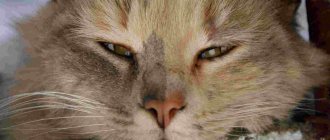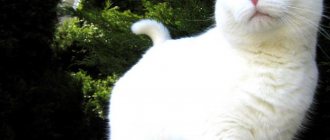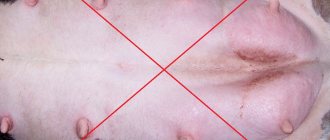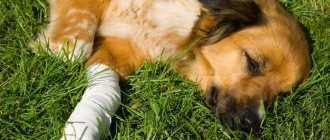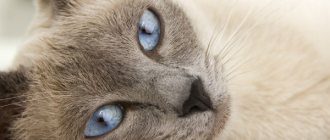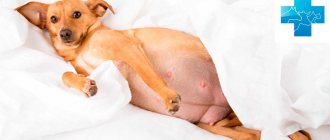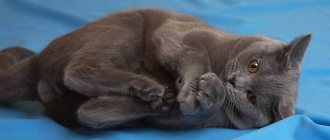Signs
Symptoms of fecal incontinence:
- Insufficient ability of the colon and rectum to retain feces.
- Urge to defecate; frequent, conscious defecation, without fecal leakage; defecation may be associated with straining (tenesmus); difficulty defecating (dyschezia) or blood in the stool.
- Pain or tenderness in the anus during physical examination of the lower bowel; an anal or rectal mass or thickening of the rectal mucosa may be detected; The external anal sphincter (the ring of muscle that opens and closes the anus) and the anal reflex are normal.
Non-nervous system incontinence can be caused by injury to the skin and tissues surrounding the anus (perianal tissues) or deep infection of these tissues, including the skin surrounding the anus with extensive perianal fistulas. In this case, the anal reflex is present, but the external anal sphincter may not close completely if there is structural damage to the sphincter.
Nervous system incontinence is characterized by involuntary bowel movements, especially during times of agitation, barking or coughing. There may be a loss of external anal muscle tone, but this tone is a poor indicator of sphincter function; the anal reflex is absent or reduced.
The presence of urinary incontinence (lack of urinary control) in addition to fecal incontinence indicates that the incontinence is related to the nervous system.
Research findings suggestive of lumbosacral spinal cord disease include loss of voluntary movement and tail tone; pain in the spinal column near the tail; partial or complete paralysis, characterized by flabby muscles (lack of muscle tone) of the hindquarters and hind legs; decreased response when testing hind paw reflexes.
Forecast
The prognosis is poor if it is not possible to identify and eliminate the root cause.
Nerve-related incontinence is often untreatable, even with appropriate medications, diet, and surgical procedures.
About half of animals with fecal incontinence are euthanized.
Read reviews about our veterinary center. Call the number and schedule a consultation right now or request a call back. (c) Veterinary center for the treatment and rehabilitation of animals “Zoostatus”. Varshavskoe highway, 125 building 1.
Causes
Signs of fecal incontinence in dogs and cats:
- Insufficient ability of the colon and rectum to retain feces.
- Diseases of the colon and/or rectum – inflammation of the colon (colic); irritable bowel syndrome; cancer.
- Diarrhea – large volumes of stool can exceed the absorptive and storage capacity of the intestines.
- Traumatic injuries to the anus - bites, abscesses, cuts.
- Damage to the external anal sphincter and anal muscles during surgery on the anus and/or rectum.
- Deep infection affecting the skin surrounding the anus, perianal fistulas.
- Diseases of the central nervous system – degenerative myelopathy, spinal cord disease; birth defects (spinal dysraphism, spina bifida); injury; intervertebral disc disease; cancer; inflammation of the spinal cord and its membranes (meningomyelitis); blockage of blood vessels leading to the spinal cord by particles of fibrocartilage (fibrocartilage embolism) and other diseases of the blood vessels.
- Cauda equina syndrome is a group of disorders in which the lumbosacral part of the spinal canal is narrowed, which puts pressure on the nerve fibers at the place where they exit the spinal cord: herniated discs (L6-L7, L7-S1); formation of bone spurs around the edges of the vertebral plates (spondylosis); congenital narrowing of the spinal canal; instability of the lumbosacral region; bacterial infection or mycosis of the intervertebral discs and adjacent vertebrae (discospondylitis); neoplasms.
- Nerve disorders affecting nerves outside the central nervous system (nerves leading to the anus) are infectious; immune; medicinal (eg, vincristine sulfate, chemotherapy drug); disorders of the autonomic nervous system (dysautonomia) and disorders/diseases of unknown origin (idiopathic disorders or diseases).
- Muscular or neuromuscular disorders.
- Degeneration (aging) – many factors are present, including loss of muscle mass (muscle atrophy) in the muscles involved in controlling bowel movements; weakness; degenerative disorders of the nervous system; old age.
Prevention of incontinence
Prevention of fecal incontinence in cats involves proper feeding of the pet. Food should not cause constipation or diarrhea. If an animal suffers from a neurological disease, it must be examined regularly. Timely treatment of infections and injuries plays an important role in the prevention of incontinence.
All information posted on the site is provided in accordance with the User Agreement and is not a direct instruction to action. We strongly recommend that before using any product, you must obtain a face-to-face consultation at an accredited veterinary clinic.
Treatment
If possible, it is necessary to identify and eliminate the root cause of the disease.
Frequent warm water enemas can reduce the volume of stool in the colon and thus reduce the incidence of involuntary bowel movements.
Changes in maintenance (for example, transferring a pet to outdoor housing) can make life easier for owners.
Reflex defecation can be induced in animals with hindquarter paralysis by applying mild rear toe pinching or tail pinching; You can also apply a warm sponge to the anus and perineum.
Relief of symptoms may occur with specific therapy for anal fistula, inflammatory bowel disease (IBD), or another non-nervous system disorder.
Diet, surgery, or medical treatment may be recommended to eliminate and relieve incontinence symptoms.
The volume of feces can be reduced by using special feeds, rice, tofu or cottage cheese. Feed your pet on a schedule to help control bowel movements. Avoid diets rich in fiber as they increase the bulk of the stool or stimulate the bowel, resulting in large stool that is difficult to pass through the intestines and can cause persistent constipation (especially in cats).
Surgical treatment of lesions of the anus and/or rectum can markedly improve the ability to retain feces in pets suffering from non-neural incontinence.
The need for use and choice of drugs are determined in each specific case individually.
Opiate drugs that affect intestinal motility (such as diphenoxylate hydrochloride and loperamide hydrochloride) increase segmental contraction of the intestine and slow the passage of feces, thereby increasing the amount of water absorbed from the feces.
Anti-inflammatory medications (such as steroids and sulfasalazine) may benefit pets with incontinence caused by inflammatory bowel disease.
No drugs have been found to effectively treat nervous system-related incontinence.
Stress
Mammals have a syndrome called bear disease. This is when the intestines relax due to nervousness. Cats and dogs are no exception. Any turn of events - a walk, moving, traveling, strangers in the house, rearranging furniture - can cause a storm of emotions and a relaxation of the stomach. Moreover, this effect is observed not only when experiences are negative, but also when they are positive. Excessive emotions are stressful in any case.
If there are no visible organic reasons for diarrhea, one can suspect the emotional nature of the symptom. In this case, it is worth calming the cat, caressing it and providing a calm environment. If the stress was caused by a one-time experience, after a while the animal will calm down and the diarrhea will go away. If the cause is chronic stress, which you cannot influence, you need to consult a veterinarian about the possibility of taking sedatives.
When a cat gives birth, the breeder needs to increase vigilance over the younger generation, to eliminate the risk of infectious and viral diseases. If the kitten has fecal incontinence, there is a suspicion of an intestinal infection, progressive gastroenteritis.
Fecal incontinence in a kitten is not an independent disease, but a symptom of impaired functioning of the gastrointestinal tract. It is possible that a microbe has entered the animal’s body and multiplies in the intestinal microflora. This imbalance provokes a number of unpleasant diseases of the digestive system, including gastroenteritis and dysbacteriosis. Therefore, first of all, you need to contact a veterinarian and undergo a full examination.
It is worth recalling that infectious diseases of the gastrointestinal tract can be contagious, so a sick kitten can provoke fecal incontinence in the entire litter. The breeder’s task is to isolate the baby until the circumstances are clarified, and not to delay going to the veterinarian. Pathological factors of fecal incontinence can be treated conservatively and surgically, and the clinical outcome depends entirely on the timely response of the breeder to the prevailing symptoms.
Chronic diseases and signs of food poisoning are the most unpleasant diagnoses that caring breeders picture in their minds. Do not panic prematurely, since the reasons for such a clinical picture may turn out to be physiological. It is enough to remove the pathogenic factor, and digestion is normalized.
If the breeder notices fecal incontinence in a kitten, he must determine its color and consistency. Before going to the veterinarian, it is advisable to collect such biological material and send it for further laboratory testing.
Nutritional features. If the breeder temporarily changes the diet of the litter, and the problem of cat stool is solved, then he must figure out which product is the main irritant of the intestinal mucosa. Having eliminated it, the little kitten’s stool immediately returns to normal.
Stress. When a small kitten finds itself in a stressful situation, veterinarians cannot rule out fecal incontinence. The first step is to eliminate the main irritant, and then give your pet a herbal sedative. With a timely response, this is a matter of 2-3 days.
Failure to comply with hygiene rules for the brood. In this case, it is important to regularly change the water and tray, and monitor the cleanliness of the pet itself. Otherwise, the conditions for the development of pathogenic flora are favorable, and intoxication of the small organism is represented by fecal incontinence.
In other cases, you need to urgently contact a specialist, otherwise the tiny animal may die from intoxication and dehydration.
On thematic forums there is a lot of valuable information about fecal incontinence in kittens, and methods of effective treatment are proposed. This is a dangerous path, because in the absence of a final diagnosis, the health of the baby can only be harmed.
It only remains to add that the kitten’s body continues to develop after birth. It is important to vigilantly monitor this natural process, to promptly prevent potential diseases and the course of dangerous pathological processes.
The human body is a reasonable and fairly balanced mechanism.
Among all infectious diseases known to science, infectious mononucleosis has a special place...
The world has known about the disease, which official medicine calls “angina pectoris,” for quite a long time.
We suggest you read: How to treat midge in rabbits
Mumps (scientific name: mumps) is an infectious disease...
Hepatic colic is a typical manifestation of cholelithiasis.
Brain edema is a consequence of excessive stress on the body.
There are no people in the world who have never had ARVI (acute respiratory viral diseases)…
A healthy human body is able to absorb so many salts obtained from water and food...
Knee bursitis is a common disease among athletes...
Patient monitoring
If fecal incontinence is caused by a disorder of the nervous system, regular neurological examinations will allow you to monitor changes in the animal's condition.
Diagnostic procedures (such as x-rays, electromyography (a study of the speed of impulses in nerves), cerebrospinal fluid analysis) may also be used to monitor the animal's condition.
Check the consistency and volume of feces and make sure that the animal is not constipated.
Tailor the diet and dosage of bowel-stimulant medications to your pet's activity level.
Symptoms
There are several signs that can accurately determine that a cat is suffering from fecal incontinence.:
- The release of feces when the pet sleeps, eats or is carried away by play.
- Behavioral disturbances, the cat becomes nervous, fearful, and may show aggression.
- The animal is unable to restrain defecation by force of will. For example, a pet is sleeping, then suddenly jumps up and runs to the tray, leaving marks along the way. This happens precisely because the cat cannot hold in his feces.
Punishment in such cases is useless and pointless; it will only aggravate stress, which will contribute to the deterioration of the pet’s condition and the progression of incontinence.
Allergy
An allergic reaction in a cat can occur to food, a bowl, an object in the house, shampoo, drops on the withers, a collar and other irritants. If something new comes into contact with the animal that was not there before, and diarrhea begins, this is a sure sign of an allergy. It may also be accompanied by vomiting, sneezing, watery eyes, drooling, lethargy, rash, hair loss, and scratching. In extremely severe cases, anaphylactic shock occurs, which can be fatal.
If there is a suspicion of an allergy, contact with the possible allergen should be stopped: the food should be removed, a new bowl should be replaced, the piece of furniture should be moved to another room and closed, and the collar should be removed. If the reaction occurs to drops on the withers, the animal can be bathed. In parallel with this, you need to remove the allergen that has already entered the bloodstream: sorbents are given for this. You can give an injection of an antihistamine.
Lydia, owner of a Scottish Straight cat:
One day my cat and I came back from a walk, and I started checking her for ticks. She lay in my arms with her belly up and was indignant that I was touching her stomach. At some point, shit sprayed out of her butt - a total of half a teaspoon. After that, the cat did not run to the toilet and did not go there for another day. There were no other signs of illness. What kind of performance this is remains a mystery to me. We think he's allergic to the new collar.
Diarrhea in Cats and Kittens
If it is difficult not to notice such a deviation as constipation in your pet, then you will definitely not ignore diarrhea! “Healthy” stool should be well-formed, without mucus, blood and undigested food, and “issued” 1-2 times a day.
Diarrhea (diarrhea) is frequent (up to ten times a day) bowel movements of a cat. In this case, fecal masses can be different: pasty, liquid, watery, with a pungent odor, with mucus, with an admixture of blood. The color range is also very diverse.
Causes of diarrhea in cats and kittens:
- overeating, improper feeding, poisoning with toxic or poor-quality foods, medications, ingestion of small foreign objects into the intestines - that is, everything about which you can say “the cat ate something”
First aid for diarrhea
It is important to find out the cause of this unpleasant phenomenon, because although diarrhea in itself is not a disease, it can be a sign of a serious illness in a cat.
If your pet has diarrhea for the first time and is not accompanied by other symptoms - large loss of fluid, fever, lethargy and refusal to eat, then you can self-medicate.
In most cases, for short-term diarrhea, a 12-hour (for a kitten) - 24-hour (for an adult cat) fasting diet is sufficient. Then you can give only easily digestible foods with low fat content, for example, white boiled chicken meat and broth, boiled rice. When feeding prepared foods - food for cats with sensitive digestion or a veterinary diet. Feed should be frequent, but in small portions. After the cat has fully recovered, we return to the normal diet.
To stop diarrhea the following are used: activated carbon (¼ -1/2 tablets, dissolved
Source
Failed diet
If the food system is changed or new foods are included in the menu, the cat may have liquid bowel movements. For example, an unfamiliar product will not be accepted by the body. Then the intestines simply throw the undigested contents out.
This also happens from milk, which in adult cats relaxes the stomach and causes gas. The gastrointestinal tract of an adult cat is not able to digest lactose: milk is only indicated for kittens up to 3 months.
At the same time, a small Scottish kitten may have loose stools due to the fact that its digestive system has not yet been adjusted and therefore a variety of foods, especially those consumed for the first time, can cause a negative reaction. If this happens, you should discard the problematic product for the near future.
Food poisoning
In case of food poisoning (eating low-quality spoiled foods or poisonous plants), the animal will vomit and diarrhea. The body thus tries to get rid of the product that has entered the intestines as quickly as possible, collecting water from the entire body in order to flush it along with the irritant into the toilet. The feces may be so liquid that the cat simply cannot hold it in.
In case of food poisoning, the cat should be put on a starvation diet for a day. You can give a sorbent to quickly remove toxins. If the condition worsens or other symptoms appear, you need to go to the vet, because it may not be food poisoning, but an infection.

